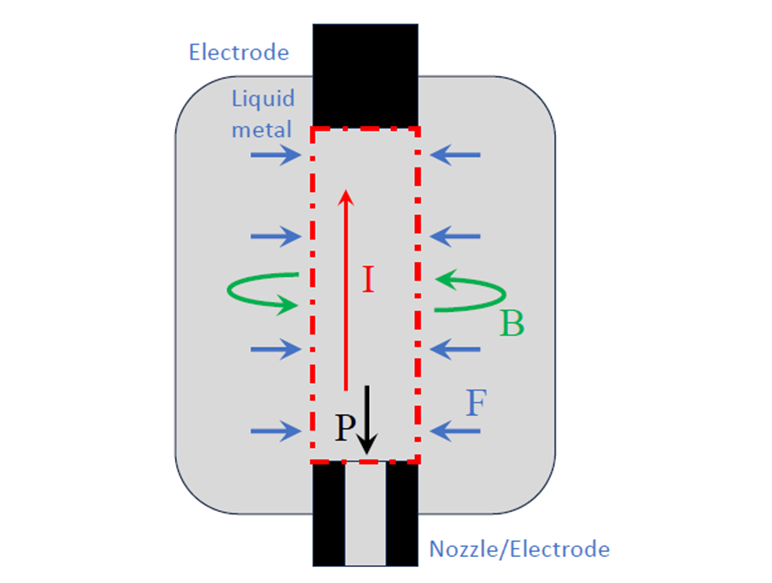Liquid metal jetting is an additive manufacturing technique in which individual droplets of liquid metal are emitted from a nozzle via a pressure pulse. The pressure pulse for a liquid metal can be generated via pneumatic pressure, but conducting liquid metals also offer an electromagnetic response that allows for an internally actuated pressure within the metal itself. This LLNL invention describes such an internally actuated pressure.
LLNL researchers developed an approach that uses a Z-pinch magnetohydrodynamic (“ZMHD”) pulse as the pressure pulse to emit the liquid metal droplets. ZMHD produces a large current pulse to traverse a column of conducting liquid metal. This pulse induces a magnetic field through Ampere’s law, and that field then interacts with the current pulse via the Lorentz force to generate a radially inward pressure. There are four main components to the apparatus:
(1) a reservoir to hold the liquid metal
(2) a right-cylindrical pressure chamber that fills with liquid metal via gravity from the reservoir
(3) current electrodes that span the pressure chamber at each end of the long axis of the right cylinder
(4) an orifice opening situated at the bottom-center of the pressure chamber
Image Caption: Schematic of ZMHD Liquid Metal Jetting Pressure Chamber
- Value proposition: Expanded performance of liquid metal jetting printers.
- More control over emission of liquid metal droplets
- Smaller printhead for the 3D printer
- Liquid metal jetting printing
Current stage of technology development: TRL 3
LLNL has filed for patent protection on this invention.


